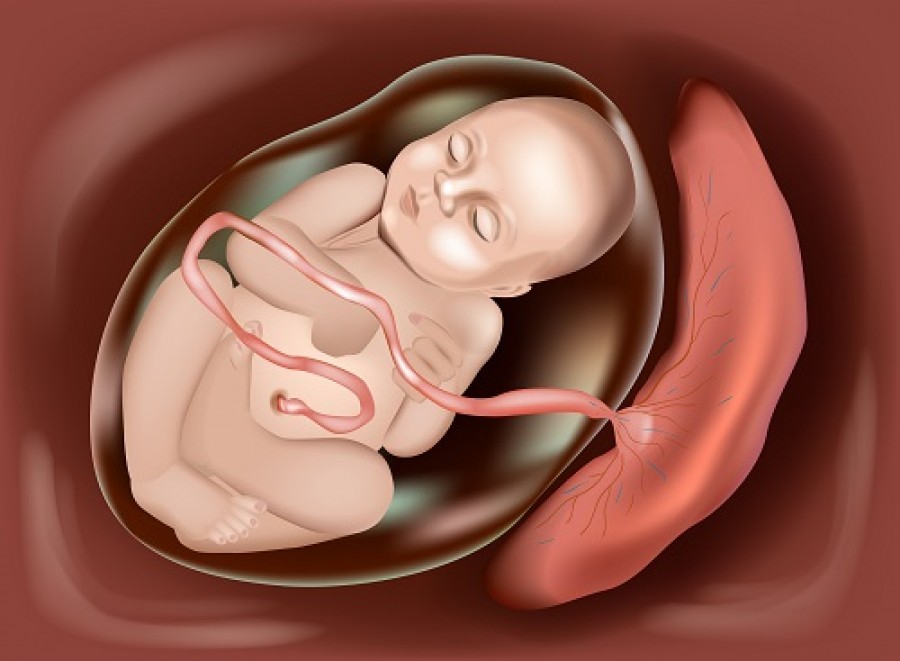Pre-eclampsia

Pre-eclampsia is a condition affecting pregnant mums primarily characterized by high blood pressure, which occurs during the second half of pregnancy or around 20 weeks. Mild pre-eclampsia affects around 5-10% of Australian mums, while severe cases affect 1-2%.
How Do I Know If I Have Pre-eclampsia?
Cases of pre-eclampsia can be mild or severe, and sometimes it may affect other systems and organs in the body. Although pre-eclampsia cannot be completely cured, there are treatment options that can help mothers manage the symptoms of pre-eclampsia during pregnancy.
The main symptom of pre-eclampsia is high blood pressure and fluid retention, which causes swelling in the hands, face, ankles, and feet. As the condition develops, other symptoms may be evident including severe headaches, dizziness, shortness of breath, pain in the upper abdomen, excessive weight gain, and shortness of breath.
What Causes Pre-eclampsia?
Pre-eclampsia is usually caused by problems associated with the placenta because the blood vessels that supply it don’t develop fully. Placentas are important because it is the organ responsible for supplying your unborn baby with blood. To fully support the growth of your baby, the placenta always requires constant supply of blood from your body.
There are also certain risk factors that contribute to a woman’s vulnerability to develop pre-eclampsia. These include existing medical disorders such as kidney disease, diabetes, lupus, high blood pressure, or antiphospholipid syndrome. If you have already had a previous case of pre-eclampsia, this also adds to the chance you may develop it again in future pregnancies.
Other risk factors include: family history, being over the age of 40, obesity at the start of your pregnancy, or if it’s your first pregnancy.
How Is Pre-Eclampsia Treated?
The only way to successfully treat pre-eclampsia is through delivery of the baby. Your doctor will keep a close eye on you until it becomes clear that it’s time to deliver the baby. The hospital will ensure your safety by closely monitoring you by regularly checking your blood pressure, taking urine samples, and have blood tests done to check your liver and kidney health.
There may be some cases where ultrasound scans will also be conducted to analyze blood flow in the placenta, assess the growth and breathing of your baby. Doctors may also use an electronic process called a cardiotocography, which helps them efficiently monitor the heart rate of the baby. This allows them to act quickly in case they detect stress in your bub.
Complications of Pre-eclampsia
If pre-eclampsia is not diagnosed, treated, or monitored properly, complications may arise which may affect both mum and bub. Complications caused by pre-eclampsia are serious and should be addressed immediately; since it is responsible for 15% of maternal mortality rates.
Problems affecting the mum include:
HELLP Syndrome stands for haemolysis (which refers to the breaking down of red blood cells), elevated liver enzymes, and low platelet count. HELLP may already be occurring in the body of a mum before she is diagnosed with pre-eclampsia. The symptoms of HELLP include nausea, pain in the upper abdomen, and headaches.
Eclampsia, which refers to a form of involuntary convulsions, may occur in pregnant women 20 weeks and beyond or right after giving birth. When an eclamptic fit happens, involuntary, repetitive movements affect the arms, neck, jaws, or legs. Sometimes a mother may lose consciousness during an eclamptic fit, or wet herself. However, eclamptic fits usually last for less than a minute and most mothers can recover full well after a case of eclampsia.
A mother may have an increased risk of suffering from a stroke because of high blood pressure. This happens because the brain lacks adequate nutrients and oxygen from the blood, and results in the death of brain cells.
Mums may also experience organ problems as a result of pre-eclampsia. These include pulmonary oedema, which is when fluid accumulates in the lungs, causing it to stop working properly because it can no longer absorb oxygen efficiently.
Kidney failure can also occur when the kidneys are no longer able to filter waste from the blood. This results in fluid and toxin build-up in the mums’s body.
Liver failure can happen especially since this organ is responsible for several important body functions such as the digestion of fat and protein. The liver also aids in the removal of toxin and production of bile. Any damage to liver functioning can be fatal.
Blood clot disorders in the mother’s system may be affected because of complications from pre-eclampsia. The medical term of this is referred to as “disseminated intravascular coagulation”.
Blood clotting disorders may occur because of excessive bleeding, since in this case there isn’t enough proteins in the blood for it to clot normally, or because blood clots can occur all over the body since proteins that are responsible for controlling blood clots become abnormal.
Problems affecting the bub include:
Mothers with pre-eclampsia may have babies that grow slower in the womb. This occurs because pre-eclampsia can affect other parts of the mum’s body, thereby reducing baby’s supply of oxygen and nutrients from the mum. Babies born from mothers with pre-eclampsia are much smaller than usual (below 2-4 kg), especially if the condition starts to develop before 37 weeks.
During severe cases of pre-eclampsia, the mother may need to go into labour much earlier even before the baby has been fully developed. If this happens, this can lead to even further complications such as the bub experiencing breathing difficulties since the lungs aren’t fully developed. The worst case scenario for pre-eclampsia is that the baby may die in the womb, resulting in a stillborn.


